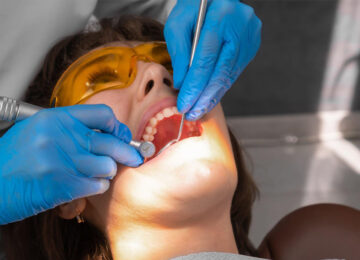A tooth with a tiny crack, namely frequently hidden to the unaided eye or even X-rays, is said to have cracked tooth disease (CTS). calling CTS “mild” feels like a bit of a joke—yeah, sure, it starts small, but let it fester, and suddenly your tooth’s screaming every time you sip something cold. Nobody wants that. The real trick? Catch those cracked tooth red flags early, before things get worse.
What Is the Syndrome of Cracked Teeth?
A tooth that has incomplete fractures—slight cracks that may spread into the tooth’s dentin or even reach the pulp—is pronounced to have cracked tooth syndrome. The crack ability not able to split the tooth into pieces like an entirely broken tooth, which makes it challenging to find.
Causes of Cracked Tooth Syndrome
- Bruxism, or the abrasive or clenching of teeth.
- Eating hard snacks such as hard candy, nuts, and ice.
- Older or larger contents. Pain in the mouth.
- The mouth’s precipitous temperature changes
A cracked tooth’s symptoms and signs.
Because the crack may not arrive and the symptoms may come and go, diagnosing CTS can be troublesome. You can also consult with your doctor for information about dental implants. These are typical signs.
1. Sharp pain when chewing or sharp.
A classic sign of CTS is pain when the bite pressure is released. It is more troublesome to identify the cause because it frequently happens infrequently.
2. sensitivity to foodstuffs that are hot, cold, or sweet.
Particularly later consuming snacks or drinks that are extremely hot or cold, you might experience a persistent sense.
3. Inexplicable toothache.
A delayed diagnosis can result from pain that has no obvious cause or that does not appear on X-rays.
4. Swelling in the tooth’s vicinity.
Gum swelling or a pimple-like hit could appear if the crack spreads to the pulp and infects it.
5. Having trouble judging the pain.
CTS pain frequently scatters, making it difficult to label the affected point.
How an endodontist can assist.
1. High-level diagnosis.
The disease of complex tooth pain is the focus of endodontists. A general dentist’s ability to overlook even the minimal cracks, but they can find them, accompanying the use of dental microscopes, CBCT imaging, and specific bite tests.
2. The root canal process.
A root canal may be required to remove infected tissue and responsibility pain if the crack has spread to the pulp, the tooth’s innermost portion. A crown is customarily used to restore the tooth after it has been sealed.
Conclusion
Cracked tooth syndrome is like the sneaky villain of dental problems—super easy to miss because the symptoms are weirdly vague. Go see an endodontist. These folks have all the gadgets and know-how to figure out what’s up and fix it. Most of the time, you keep your real tooth, which is way better than the fake alternatives. Don’t wait till you regret it.












